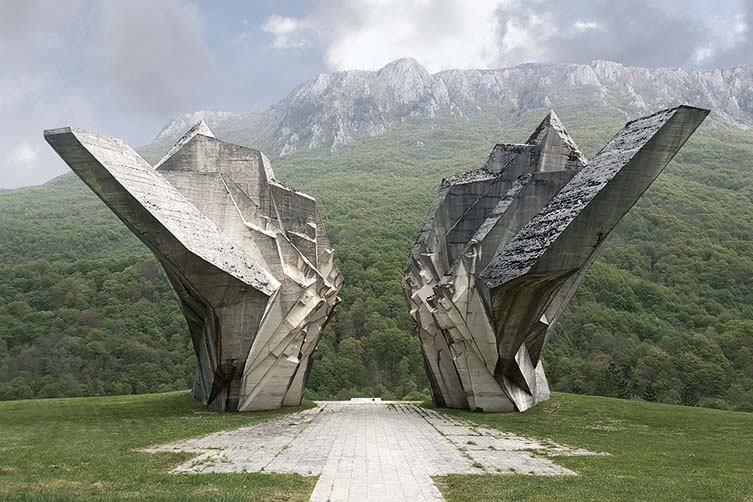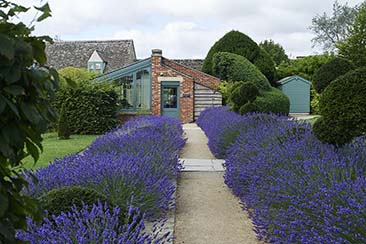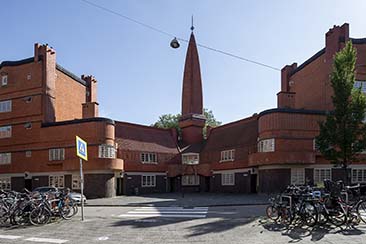Representing different things to different people, Spomeniks—the Serbo-Croatian/Slovenian word for ‘monument’—are, in the physical sense, a series of structures built from the 1950s-1990s during Josip Tito’s Republic of Yugoslavia. The legacy of a bygone era, they immortalise complex and conflicting sentiments; from brutal war crimes to strange symbolic hope, optimism for the utopian society Tito imagined.
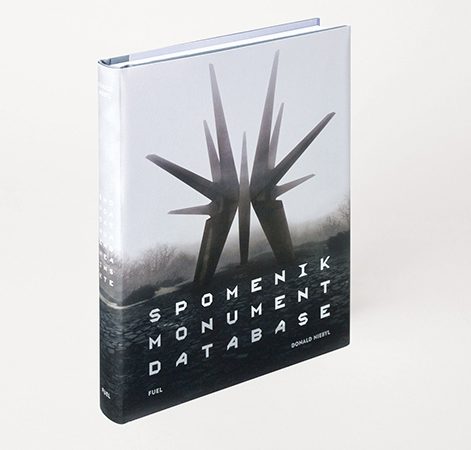
From coastal resorts to remote mountains, hundreds of Spomeniks popped up across the country. Noted today for their alien-like appearance—noticeably out of place, often imposing concrete built amid natural surrounds—they conveyed a potent story rooted in conflict and a bloody victory against fascism, but also would serve as political devices for communicating the country’s vision of a new tomorrow; many conceived as ‘outdoor classrooms’ from which to impart the history, mythology, and ideologies of Socialist Yugoslavia to the country’s youth.
Documenting more than 80 examples of these brutalist, otherworldly monuments, the FUEL-published Spomenik Monument Database by Donald Niebyl is perhaps the most comprehensive survey available of this obscure but storied architectural phenomenon. Complete with fold-out map that shows the location of each spomenik using GPS coordinates, the 208-page hardback with dust jacket provides a fascinating insight—taking readers on a journey of vital sociopolitical history and its surprising architectural legacy.
From the Vojin Stojić- and Gradimir Medaković-designed Monument to the Fallen Soldiers of the Kosmaj Partisan Detachment at Mount Kosmaj, Serbia; the Ilinden Memorial, a bulbous and uneasy home-like monument situated in Kruševo, Macedonia; to Memorial Valley of Heroes, a complex commemorating the Battle of the Sutjeska standing at 15 metres high and 25 metres wide, this exhaustive compilation compiles the Spomeniks that survived the conflicts that extended through the Balkan region in the 1990s—haunting cultural markers whose stories demand to be told.
Spomenik Monument Database is available now from FUEL.
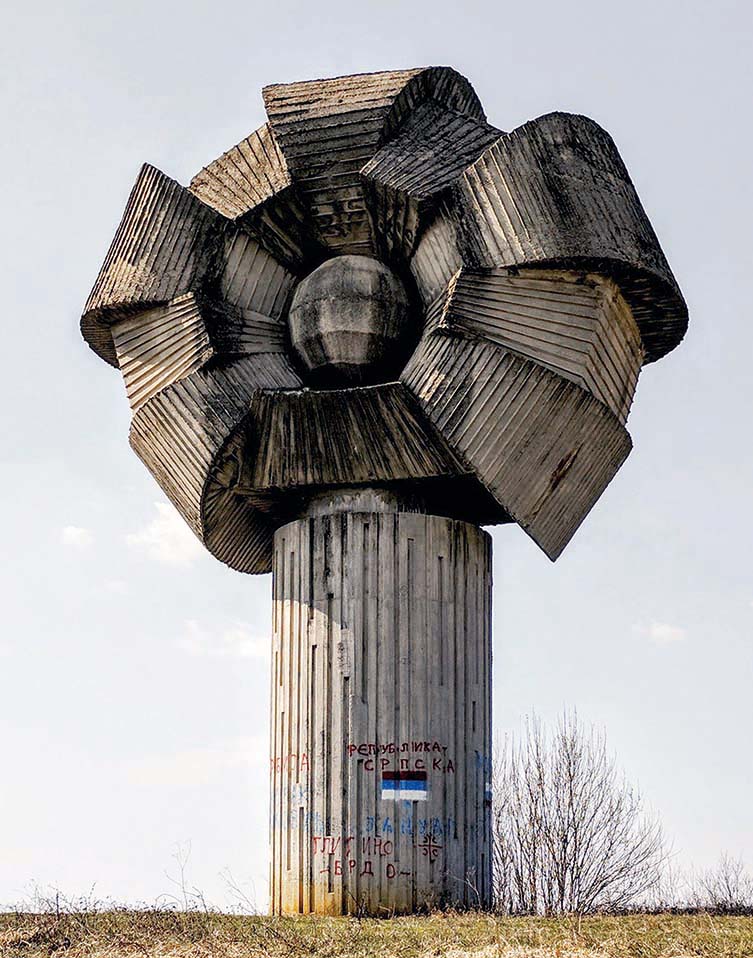
Freedom Hill Monument
Gligino Hill, Dobrljin, Republic of Srpska, Bosnia and Herzegovina
Year completed: unknown
Designer: unknown
Coordinates: N45°08’32.3″, E16°29’47.5″
Dimensions: 10 metres high
Materials: Poured concrete and rebar
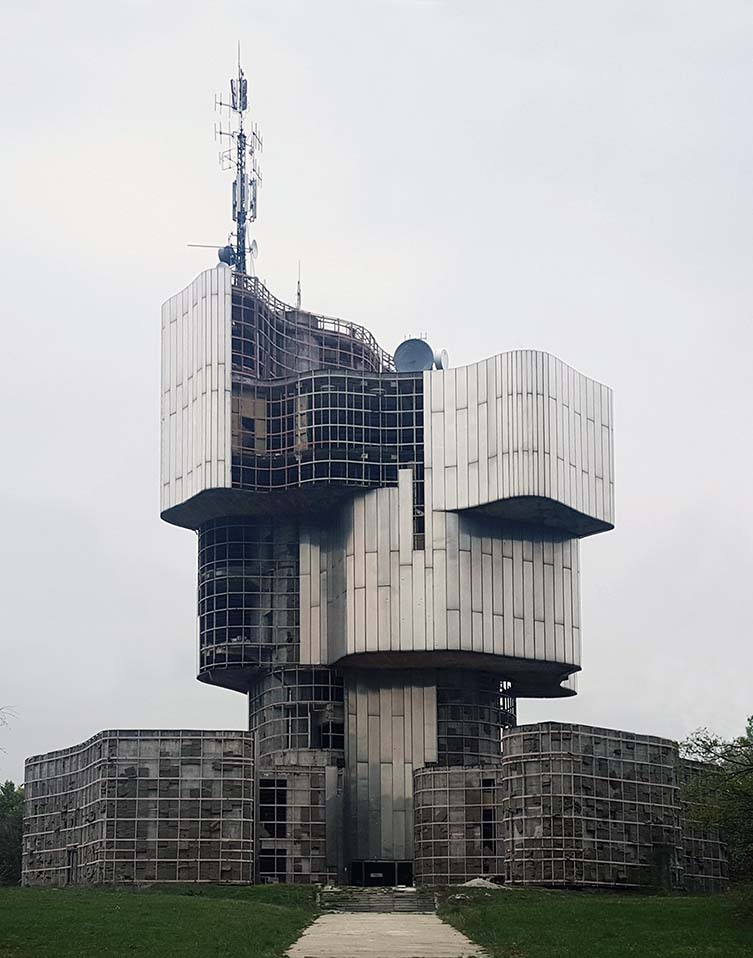
Monument to the Uprising of the People of Kordun and Banija
Petrova Gora National Park, Vojnić, Croatia
Year completed: 1981 (10 years to build)
Designers: Vojin Bakić and Berislav Šerbetić
Coordinates: N45°18’58.6″, E15°48’17.6″
Dimensions: 37 metres high and 40 metres wide
Materials: Poured concrete, rebar, steel frame and stainless-steel plates
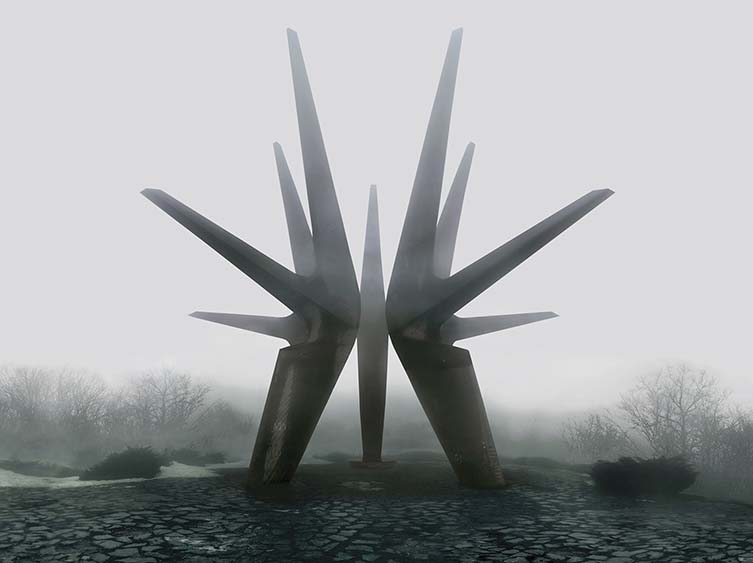
Monument to the Fallen Soldiers of the Kosmaj Partisan Detachment
Kosmaj Mountain Park, Serbia
Year completed: 1970
Designers: Vojin Stojić and Gradimir Medaković
Coordinates: N44°28’04.3″, E20°34’18.3″
Dimensions: 40 metres high
Materials: Poured concrete and rebar
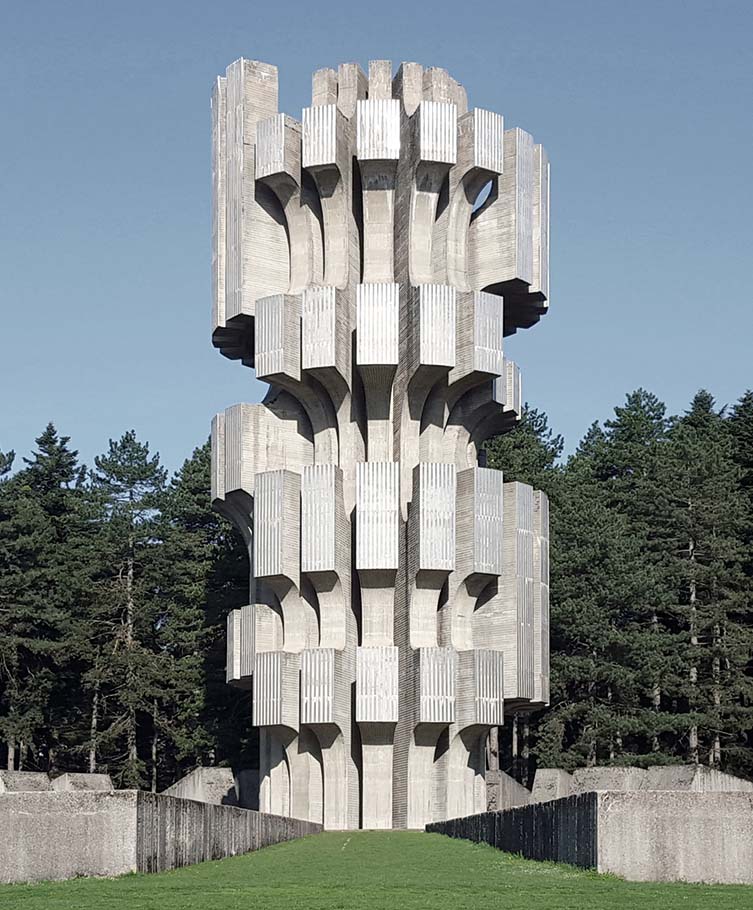
Monument to the Revolution
Mrakovica area of Kozara National Park, Republic of Srpska, Bosnia and Herzegovina
Year completed: 1972
Designer: Dušan Džamonja
Coordinates: N45°00’49.7″, E16°54’32.9″
Dimensions: 33 metres high and 8 metres wide
Materials: Poured concrete, rebar and steel plates
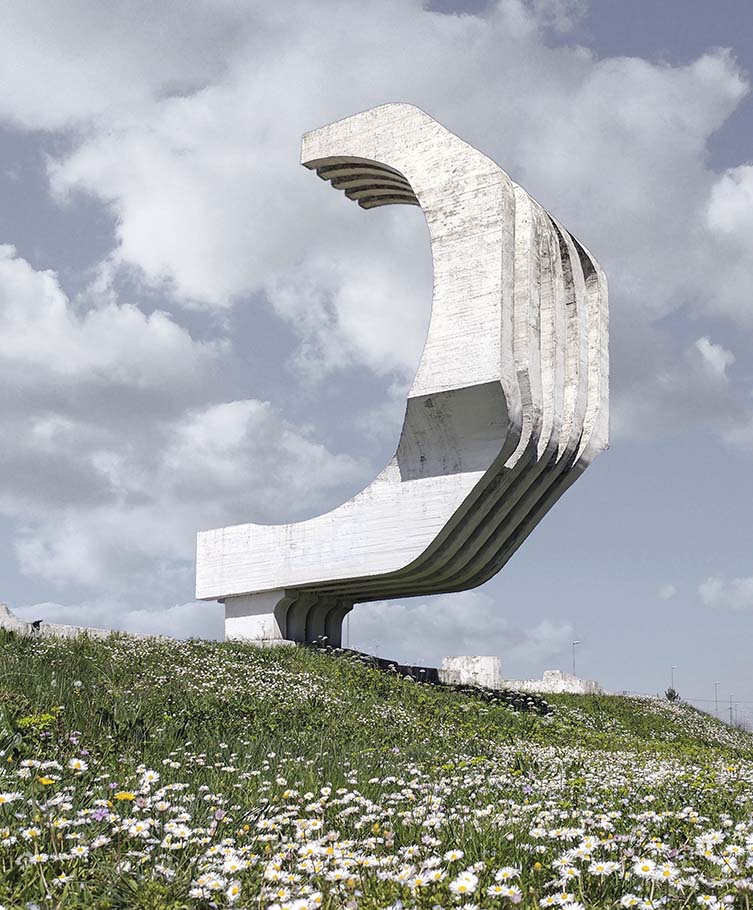
Monument to the Fallen Fighters of Golubovci
Golubovci, Montenegro
Year completed: 1974
Designers: Slobodan Boba Slovinić and Vukota Tupa Vukotić
Coordinates: N42°19’35.6″, E19°13’11.8″
Dimensions: 7 metres high
Materials: Poured concrete and rebar
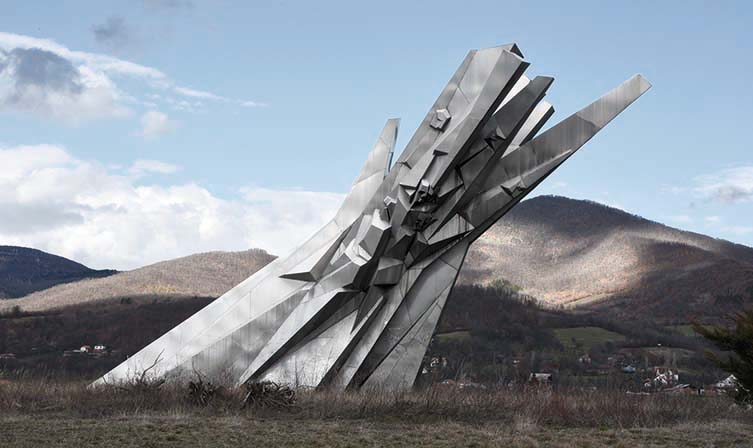
Courage: A Monument to the Fallen Soldiers of the Čačak Partisan Detachment
Ostra, Serbia
Year completed: 1969 (2 years to build)
Designers: Miodrag Živković and Svetislav Licina
Coordinates: N43°54’41.5″, E20°30’59.7″
Dimensions: 10 metres high and 17 metres wide
Materials: Poured concrete, steel frame and aluminium panels
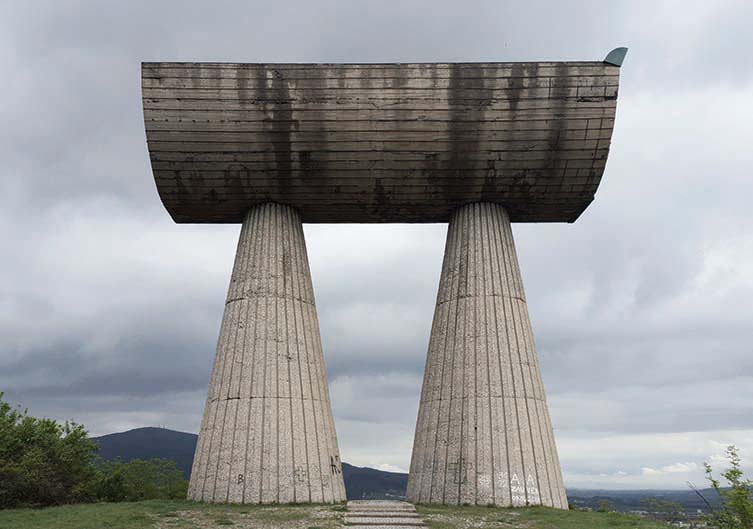
Shrine to the Revolution or Monument to Fallen Miners
Partisan Hill in Mitrovica, Kosovo
Year completed: 1973
Designer: Bogdan Bogdanović
Coordinates: N42°53’45.3″, E20°51’36.4″
Dimensions: 19 metres high
Materials: Poured concrete, rebar and copper
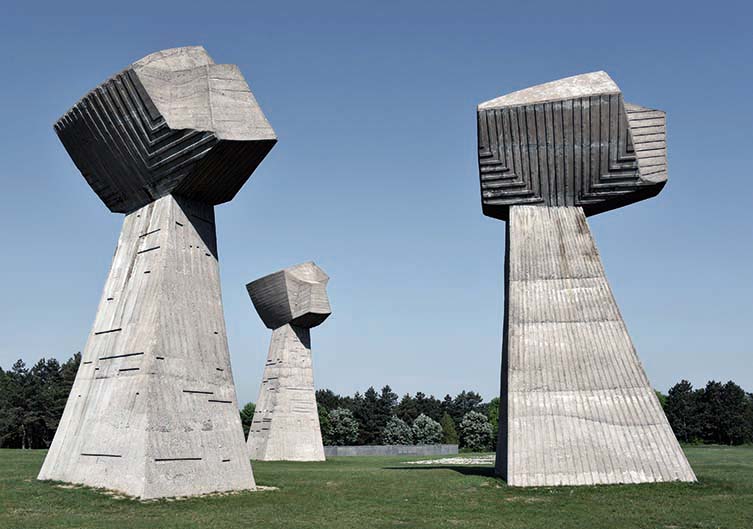
Bubanj Memorial Park, The Three Fists
Niš, Serbia
Year completed: 1963 (3 years to build)
Designers: Ivana Sabolić and Mihajlo Mitrović
Coordinates: N43°18’18.2″, E21°52’21.9″
Dimensions: Three monoliths, 18–23 metres high
Materials: Poured concrete and rebar
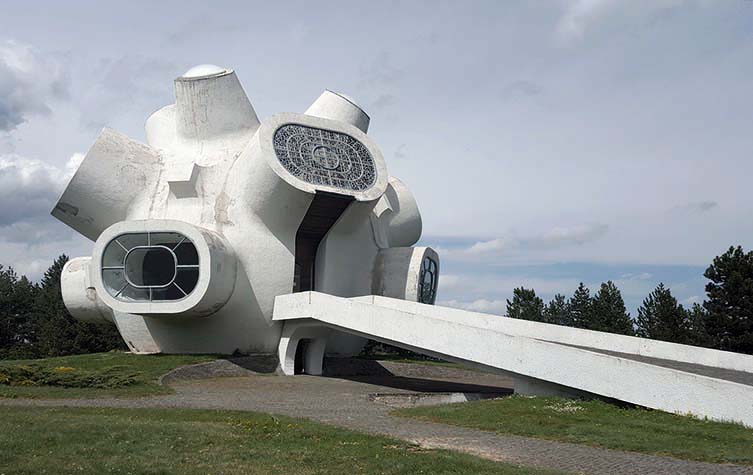
Ilinden Memorial, also known as Makedonium
Kruševo, Macedonia
Year completed: 1974 (4 years to build)
Designers: Jordan Grabul and Iskra Grabul
Coordinates: N41°22’38.7″, E21°14’54.2″
Dimensions: 25 metres high
Materials: Poured concrete, rebar and glass
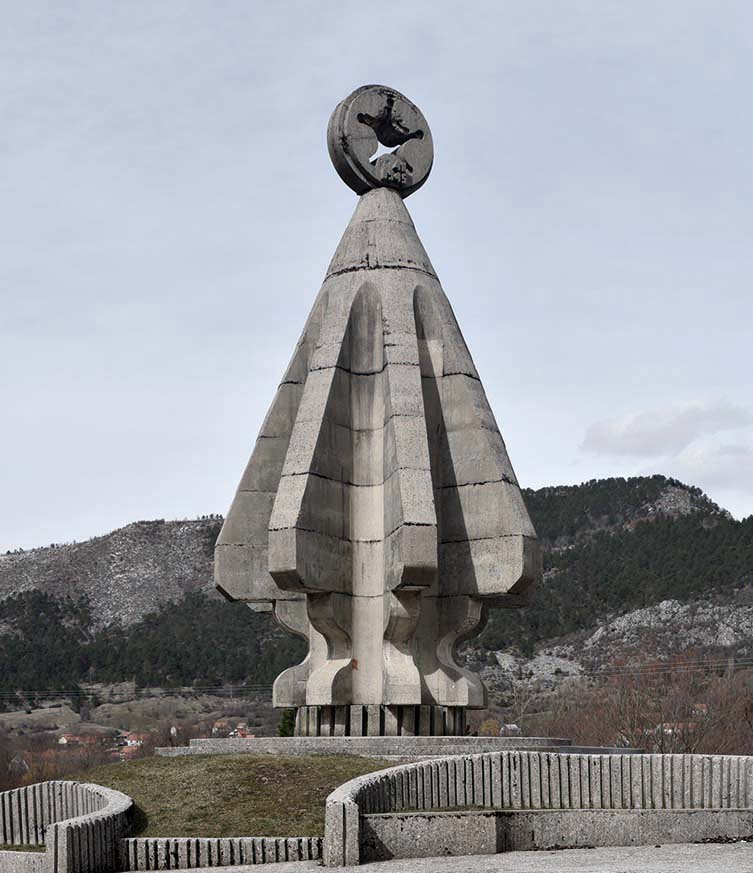
Monument to the Fallen Soldiers on Sutjeska
Župa Nikšićka, Carine, Montenegro
Year completed: 1984
Designer: Ljubo Vojvodić
Coordinates: N42°43’56.1″, E19°04’59.4″
Dimensions: 11 metres high
Materials: Concrete
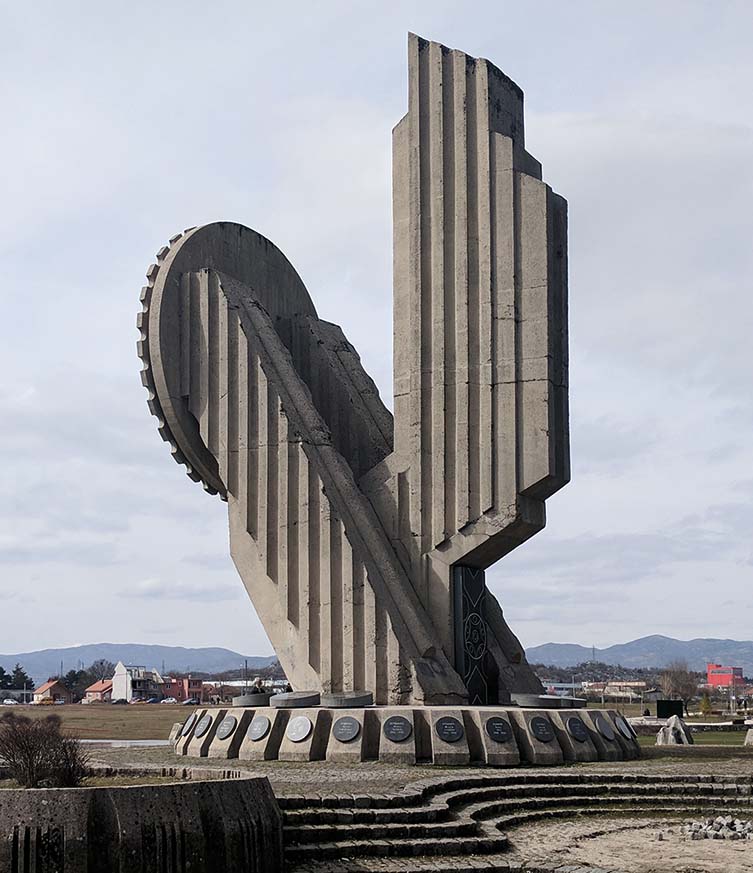
Monument to Fallen Fighters of World War II
Nikšić, Montenegro
Year completed: 1987
Designers: Ljubo Vojvodić
Coordinates: N42°45’47.2″, E18°57’34.6″
Dimensions: 20 metres high
Materials: Poured concrete and rebar
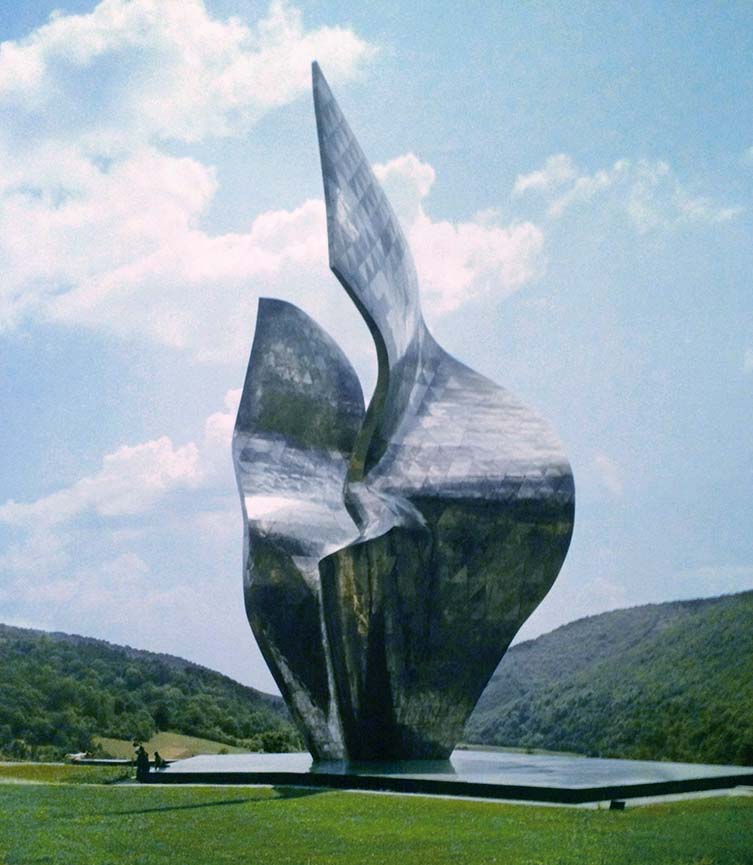
Monument to the Revolutionary Victory of the People of Slavonia
Blažuj Hill, Kamenska, Croatia
Year completed: 1968 (2 years to build)
Designer: Vojin Bakić
Coordinates: N45°26’46.4″, E17°28’36.4″
Dimensions: 30 metres high
Materials: Poured concrete, rebar and stainless steel
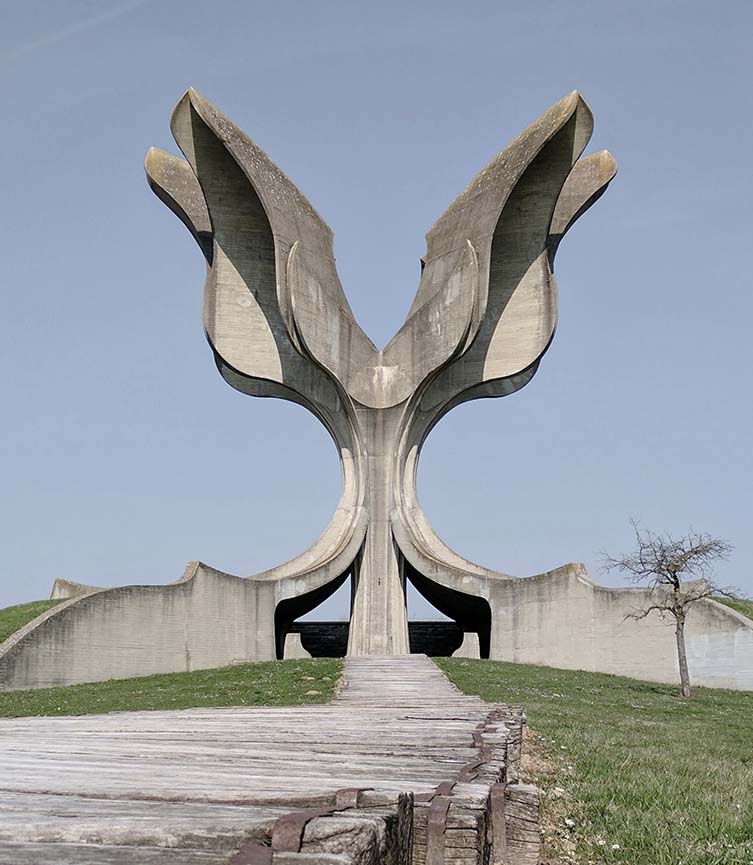
The Flower Monument, commonly referred to as the Stone Flower
Jasenovac, Croatia
Year completed: 1966 (6 years to build)
Designer: Bogdan Bogdanović
Coordinates: N45°16’49.4″, E16°55’42.2″
Dimensions: 24 metres high and 35 metres wide
Materials: Poured concrete, rebar and wood
